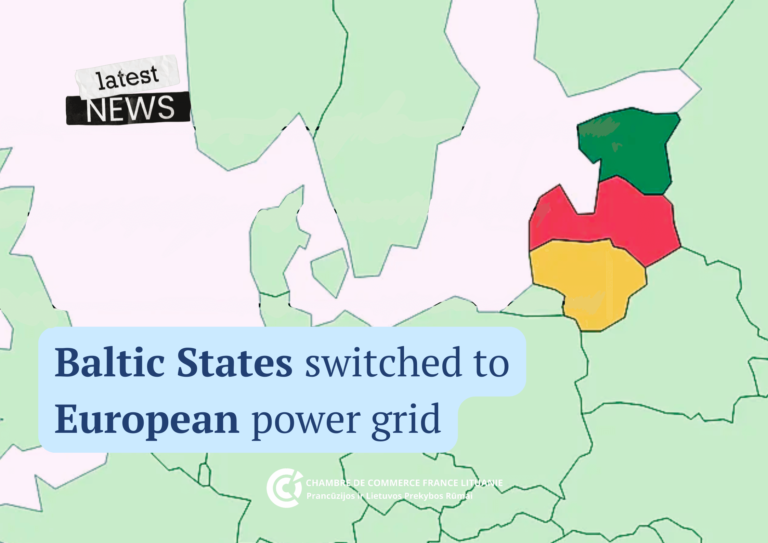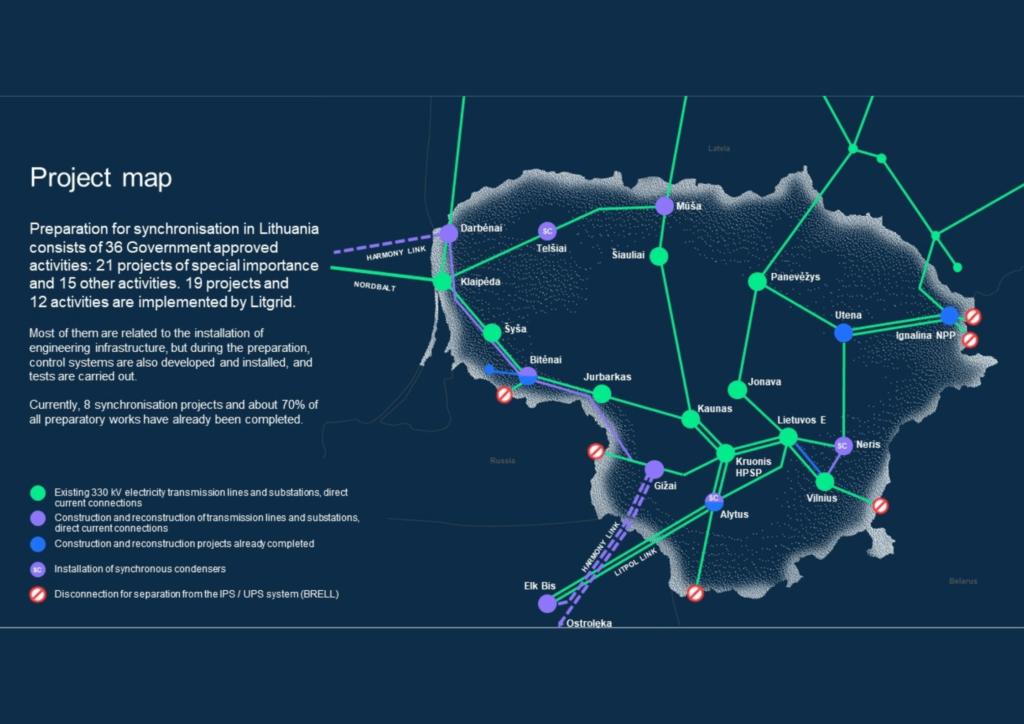Copyright By Chambre de Commerce Franco-Lituanienne - 2024

On February 9, 2025, the Baltic states—Lithuania, Latvia, and Estonia—successfully synchronized their electricity grids with the Continental Europe Synchronous Area (CESA), marking a significant milestone in the energy independence
This transition involved disconnecting from the BRELL system, which had linked Baltic countries to Russia and Belarus since the 1950s
The synchronization project started in 2009. It was a journey that took years, requiring substantial infrastructure investment, strategic planning, political will, perseverance, and trust
On February 9, 2025, the Baltic states—Lithuania, Latvia, and Estonia—successfully synchronized their electricity grids with the Continental Europe Synchronous Area (CESA), marking a significant milestone in the energy independence
Benefits of the synchronization:
The Baltic countries will synchronize with the Continental European Synchronous Area through the expanded LitPol Link connection between Lithuania and Poland. In preparation, the Baltic and Polish electricity transmission networks are being reinforced, synchronous condensers are being installed, and systems are being readied for disconnection from the IPS/UPS network and independent frequency control
The newly built Harmony Link Sea connection, set to launch in the first quarter of 2028, will enhance market integration by enabling electricity trade with Poland
For a long time, Lithuania was extremely dependent on the electricity import. However, energy landscape is rapidly changing. By 2023, nearly 50% of Lithuanian’s electricity was generated domestically, with solar and wind power
A step ahead was done in 2015 with the introduction of the net-metering system, enabling solar energy producers to not only generate electricity but also store excess power in the grid for later use
Today, more than 124,000 consumers generate their own solar power—a number that has grown by 40% in just a few years
Achieving energy independence is a milestone, but the journey does not end here. Ambition is clear: by 2030, Lithuania must produce as much electricity as it consumes. By 2050 – become a country which generates 100% of electricity from wind, solar and other renewable resources and even become an exporter

Copyright By Chambre de Commerce Franco-Lituanienne - 2024
Signup for news !
You have successfully joined our subscriber list.